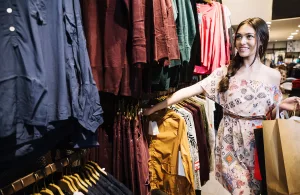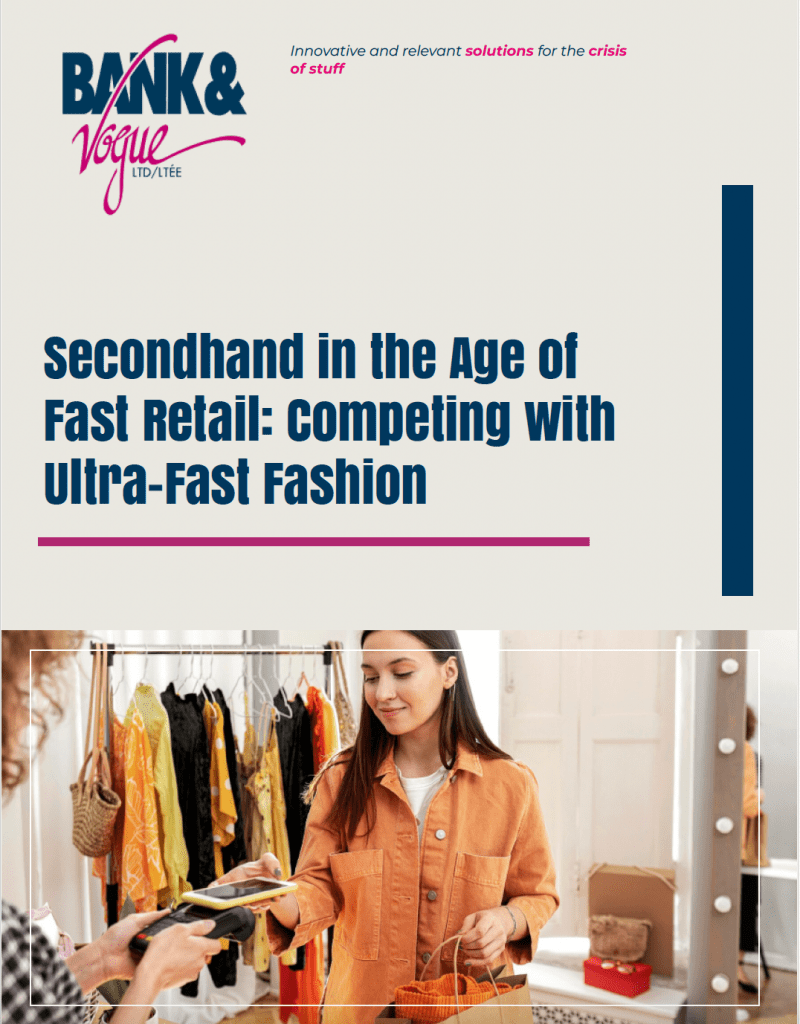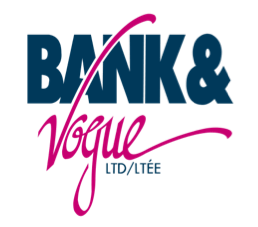Executive Summary
The rise of ultra-fast fashion—epitomized by brands like Shein, Temu, and Zara—has reshaped the global apparel landscape, intensifying competition in price, convenience, and trend responsiveness. While this poses challenges for the secondhand clothing sector, it also opens unique opportunities. This white paper explores the impact of ultra-fast fashion on the secondhand market and outlines strategic responses for resellers to remain competitive and relevant. Key areas of focus include pricing, quality assurance, sustainability storytelling, policy impacts, and shifting consumer values. Real-world leaders such as Bank & Vogue, Beyond Retro, and BVH (Bank & Vogue Holdings) are cited as examples of successful circular economy pioneers adapting to these market changes.
The Rise of Ultra-Fast Fashion
Ultra-fast fashion brands have revolutionized clothing production by accelerating design-to-shelf cycles to as little as one week. Enabled by advanced data analytics, real-time consumer trend tracking, global supply chains, and low labor costs, brands like Shein, Temu, and Cider introduce thousands of new styles weekly at rock-bottom prices.
According to the Ellen MacArthur Foundation and updated insights from the 2024 Global Fashion Agenda Pulse Report, global apparel production has continued to rise, with over 120 billion garments produced in 2023 alone. Meanwhile, the average number of times a garment is worn has declined by more than 40% since 2000. This massive output and rapid consumption rate saturate markets with disposable clothing, challenging the value proposition of reused goods.
Impacts on the Secondhand Clothing Market
Price Pressure: Ultra-fast fashion’s low price points challenge secondhand resellers to justify their often higher costs, particularly for curated, vintage, or branded items.
Quality Comparison: Fast fashion garments are typically made with lower-quality materials, but secondhand markets often rely on durability and craftsmanship to justify their value.
Changing Consumer Expectations: Shoppers, especially Gen Z and Gen Alpha, expect rapid inventory turnover, digital-first shopping experiences, and social-media-centric marketing—areas where secondhand retailers are evolving but face competition.
Strategies for Secondhand Wholesalers to Compete
Lean into Sustainability Messaging: Secondhand fashion significantly reduces textile waste, carbon emissions, and water use. According to the 2024 ThredUp Resale Report, extending the life of one garment by nine months reduces its carbon, water, and waste footprint by 20-30%. Resellers can leverage this data in B2B marketing and storytelling. Companies like Bank & Vogue and Beyond Retro prominently highlight these sustainability benefits in their branding and customer engagement.
Focus on Quality Assurance and Curated Selection: By offering garments that have withstood the test of time, secondhand wholesalers can position themselves as purveyors of value and longevity. Detailed sorting, grading, and quality labeling enhance buyer trust, particularly in bulk wholesale markets. Bank & Vogue, a leader in wholesale secondhand, sets benchmarks with its meticulous sorting systems tailored for various global markets.
Embrace Digital Innovation: Live selling, smart inventory systems, and AI-powered trend tracking are becoming standard tools. Platforms like Treet and Recurate allow even smaller resellers to create branded resale ecosystems. BVH, through its multiple arms, continues to invest in digital transformation to streamline supply chains and expand access to secondhand inventory.

Build a Community and Ethical Brand Identity: Transparency about sourcing, labor practices, and environmental impact resonates with eco-conscious B2B clients. Partnerships with NGOs and local governments for textile recycling or educational campaigns add community value. Beyond Retro actively promotes circular initiatives, such as their in-store recycling programs and repair workshops.
The Role of Policy, Regulation, and Cultural Shifts
Policy and Regulation: The EU Strategy for Sustainable and Circular Textiles (2022) is being followed by specific Extended Producer Responsibility (EPR) implementations in France, Germany, and Spain. These regulations compel producers to take responsibility for post-consumer waste and financially support reuse and recycling efforts. Companies like Bank & Vogue are well-positioned to collaborate with municipalities and governments under these frameworks.
Consumer Shift Toward Sustainability: According to a 2025 Fashion Transparency Index, over 65% of Gen Z consumers consider sustainability when purchasing apparel, and nearly 50% report buying secondhand at least once every quarter. Affordability, style, and climate consciousness are converging.
Retail Collaborations: Mainstream brands continue to embrace resale, with H&M expanding its Rewear program globally in 2024, and Zara piloting resale integration in stores. These shifts validate resale and may introduce hybrid retail models that incorporate wholesale secondhand sourcing.
Conclusion
While ultra-fast fashion presents formidable competition, secondhand wholesalers possess unique advantages in sustainability, quality, and circular business models. By adapting to digital demands, embracing regulatory shifts, and highlighting environmental impact, resellers can differentiate themselves and meet the growing demand for conscious fashion. The strategies and practices of companies like Bank & Vogue, Beyond Retro, and BVH illustrate the industry’s adaptability and long-term value creation.







